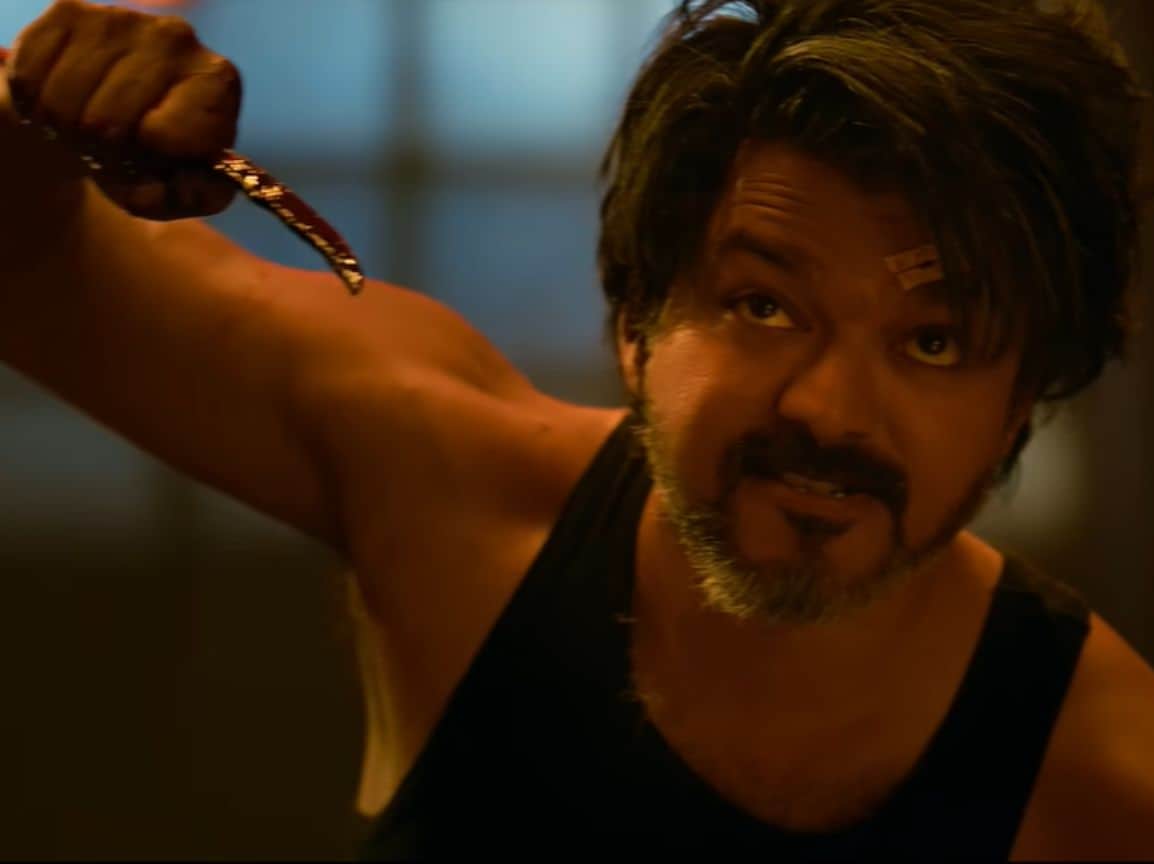Expanded from a 6 minutes short with the same name (which was released 10 years later, though), “Kommander Kulas” is one of the most formulaic films by the Filipino director, although its experimental nature is undoubted.
The film begins in an unusual (not for Khavn) fashion, with narration on black screen explaining the myth of Kommander Kulas, followed by images of a painting, before the narrator begins addressing the audience. Then come the credits, then the actual film, which follows a repetitive, but highly unusual narrative.
In that fashion, sequences of Kommander Kulas riding his destitute friend, Carabao, a water buffalo, through the forests and fields, with the narration eventually revealing that he has lost his heart and is in search for it. These sequences are followed by a series of vignettes whose artful grotesqueness can only be compared with their blasphemous concept and the preposterous narration, usually by someone of different sex than the person featured in the segment. An old lady is accompanied by narration about sex with a winged creature that is neither a chicken nor a duck. Two kids on a cross, although not exactly crucified, an obese nude woman who seems to relieve herself in a container of sorts, a nude man behind a half-built wall looking himself in a small mirror, and a man wearing women's clothes while a knife surrounded by blood is placed on the floor, are just some of these vignettes. The third part of the form has a wooden piano placed in various locations, mostly in a city, with the images accompanied by songs that sound rather old.
The narrative bares somesemblance with road-movies, both through the travelling duo and through the concept that the vignettes are actually individuals Kommander Kulas meets in his travels. This element however, is quite abstract and surrealistic, while the piano and the various locations it is placed add even more to this last aspect. The narration also makes very little sense, occasionally seeming like poetry, occasionally like mythology and occasionally as something that cannot be classified in any way, with the only element keeping the whole thing together being the succession of the three different types of segments, which is what allows the narrative to exhibit at least some semblance of form.
The futility of Kulas's search for his heart appears as something of a comment, with Khavn eventually connecting it with the concept of death and the thin borders that separate reality from fantasy and dreams (nightmares if you prefer). The central focus however, seems to be for Khavn to challenge the conception of what is proper, with the vignettes having an obvious goal to offend, challenge and mock this perception, with the “attack” against religion and particularly Christianity being rather obvious. At the same time, however, these segments also exhibit a certain kind of appeal through their derogatory nature, that makes it very difficult to look away from them, despite their evident grotesqueness.
Albert Banzon's camera implements mostly long-shots in the presentation of the Kommander, in a tactic that allows a sense of mystery to surround the character, since his face is barely visible, but also for the natural beauty of the setting to be highlighted. The presence of pianos, on the other hand, gives a surrealistic note to the story, while the aforementioned extreme sequences add a gothic element, particularly through the presentation of various religious motifs and symbols, with Banzon's work in that part, being more of a photographer's. Lawrence S. Ang's occasionally abrupt cuts towards these images induce the movie with a sense of shock, in an otherwise relatively slow and with very little movement pace, since the only sense of motion derives from the rather leisurely speed of the water buffalo.
Having reviewed dozens of Khavn's films by now, I have to admit the guy burns my brain cells every time I watch a movie of his (particularly his older ones) as I try to fathom what I am watching, how/if all these sequences are supposed to make sense, and if I have to know everything about Filipino history, Khavn's life and living in Manila in order to understand. At the same time though, I also find myself glued to the screen, appreciating a sense of artistry and beauty (could be ugliness) that is artful in ways that are very difficult to describe. I guess this is where his films' value lies.















